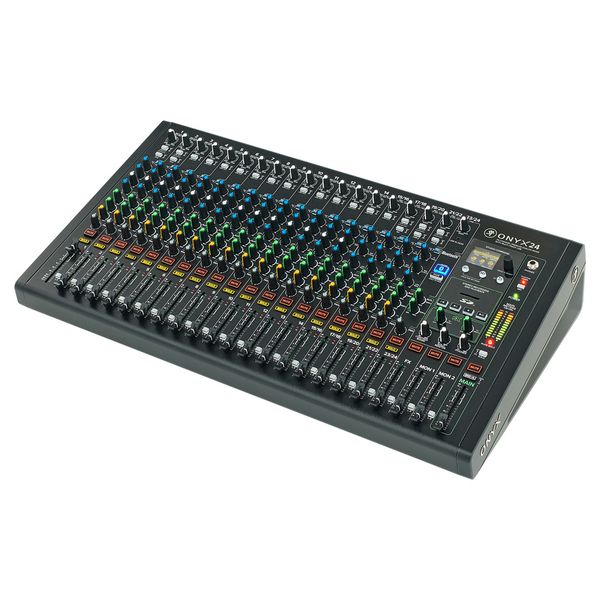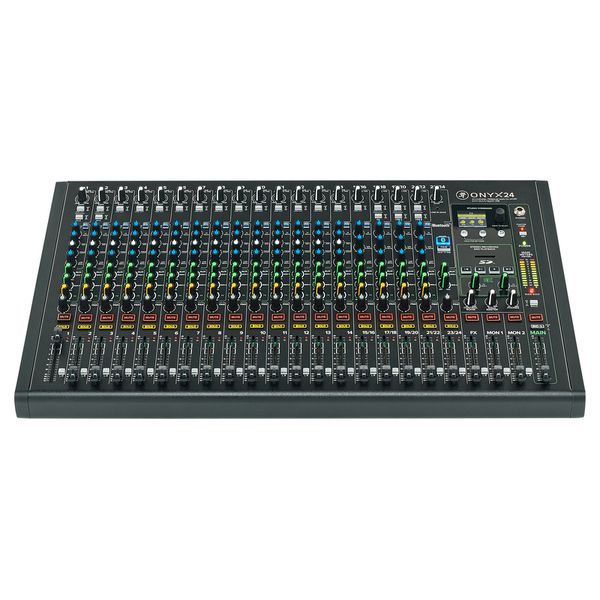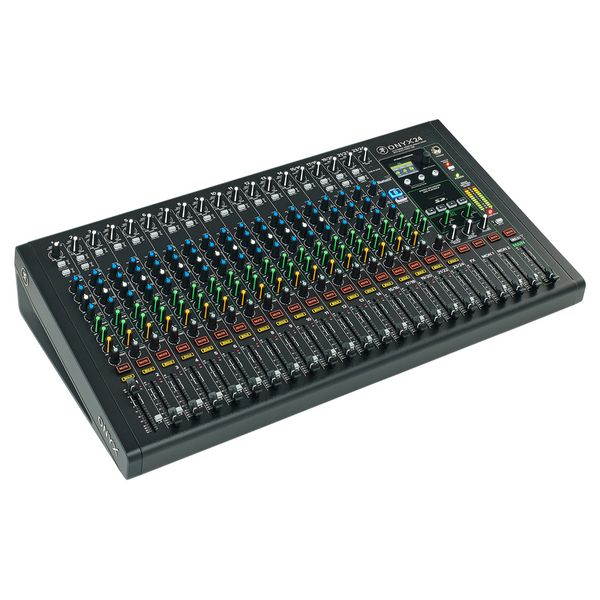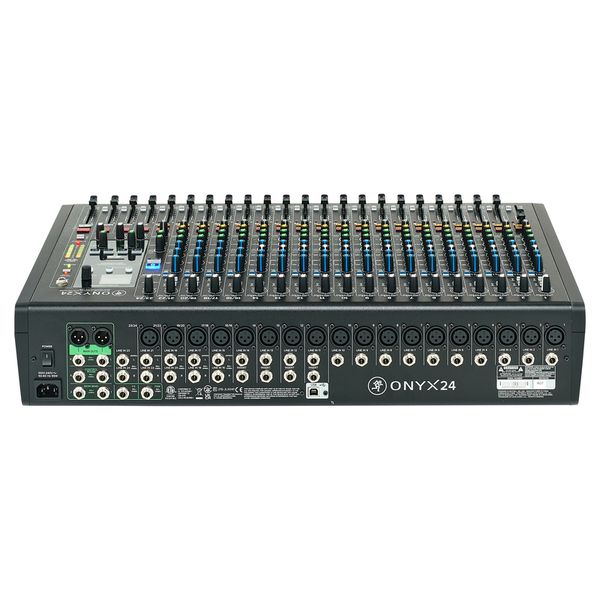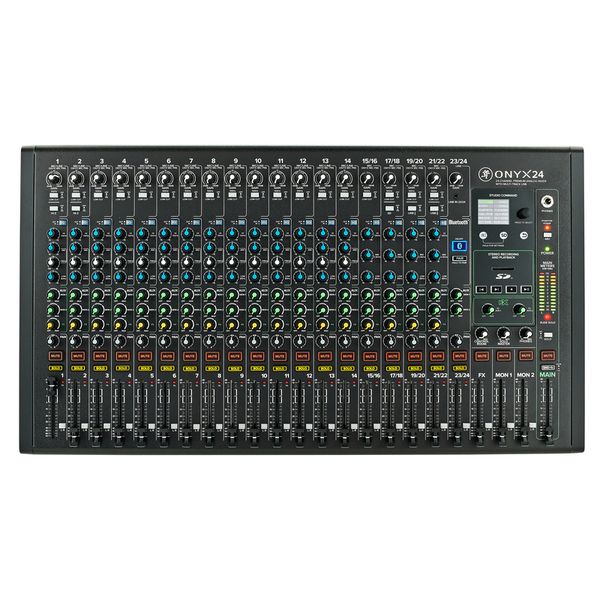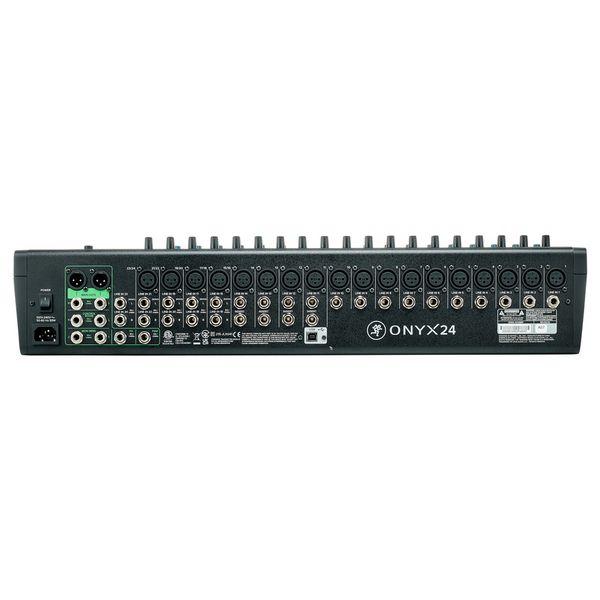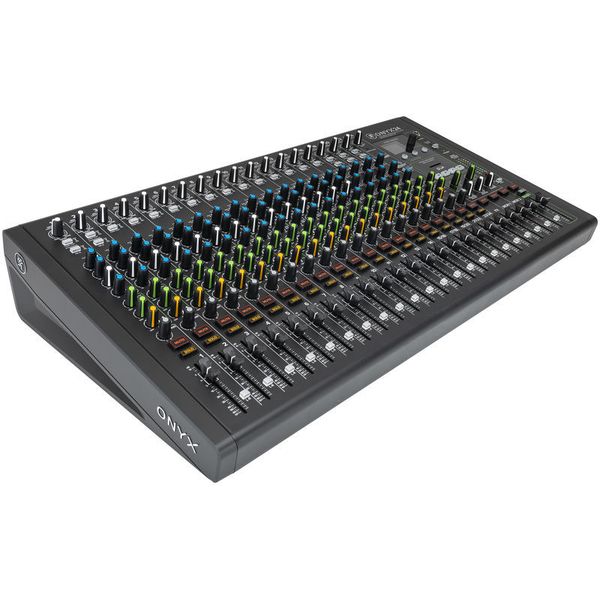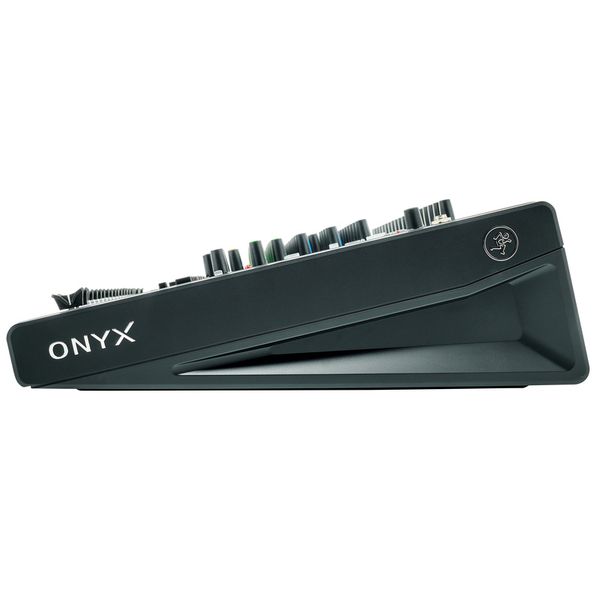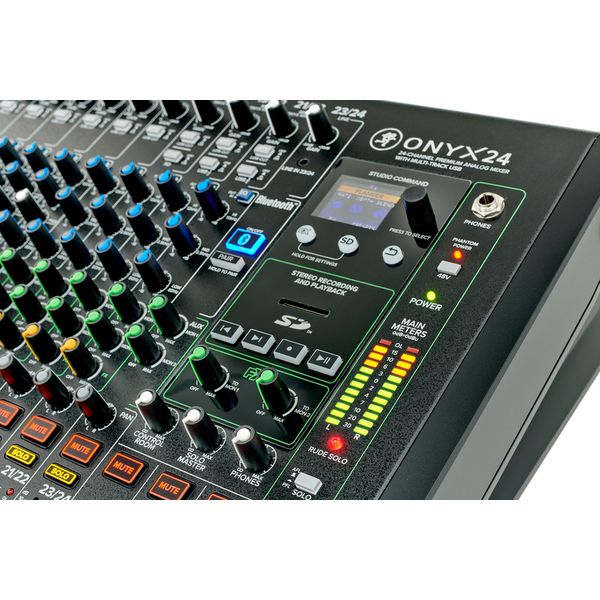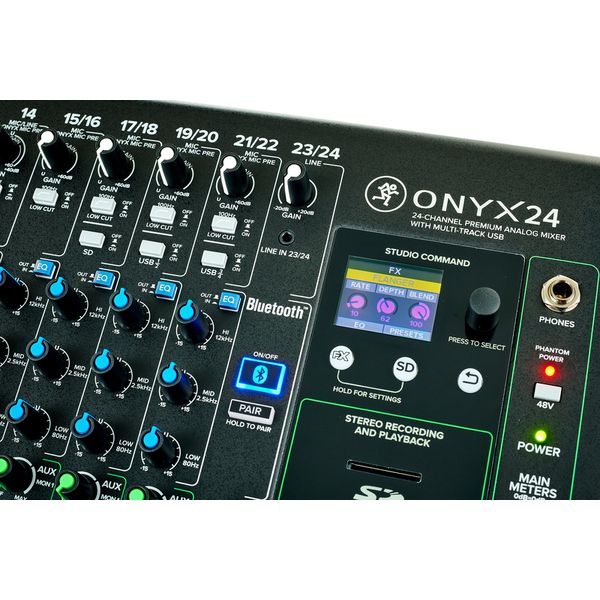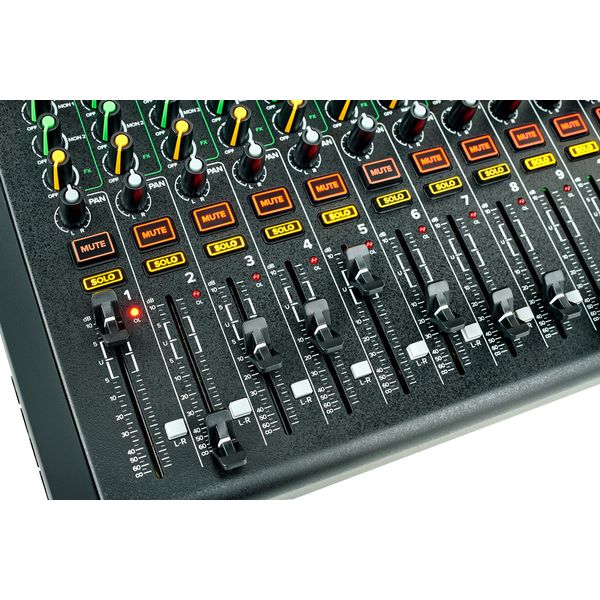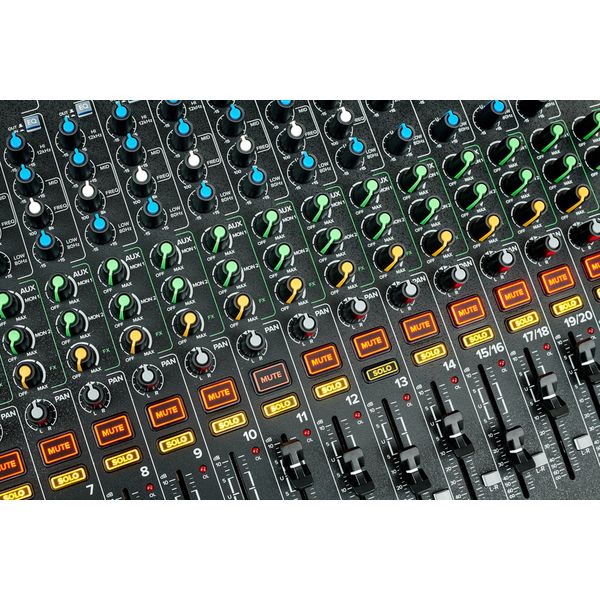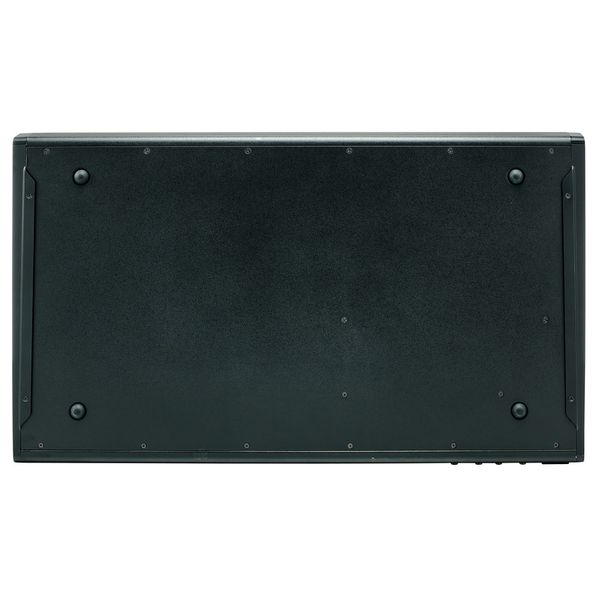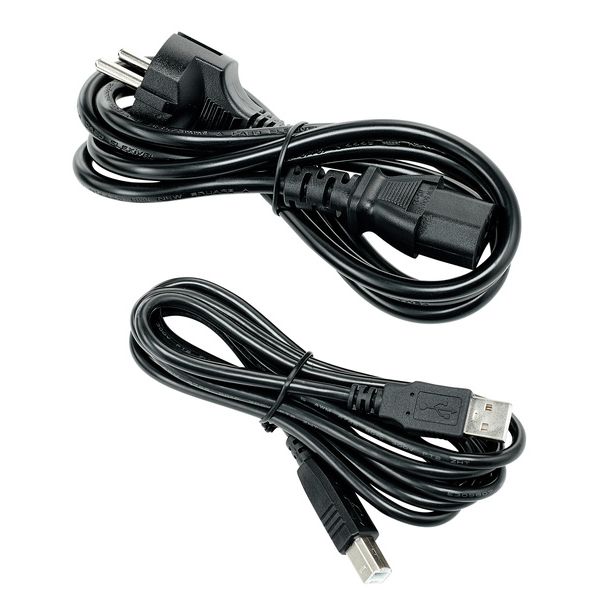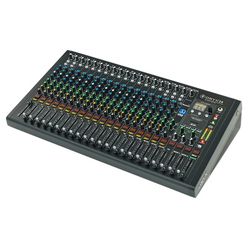Console de mixage 24 canaux
- 18 entrées micro avec filtre coupe-bas 100 Hz et alimentation fantôme 48 V
- Gain jusqu'à 60 dB
- Égaliseur 3 bandes avec médiums paramétriques sur canaux 1 à 14
- Égaliseur 3 bandes sur canaux 15 à 24
- Entrées instrument pour guitare, basse et autres instruments
- Enregistrement multipiste 24 bits/ 96 kHz - 24 pistes via USB vers MAC/PC
- Enregistrement stéréo sur carte SD
- Possibilité d'enregistrement de la sommation via une seule touche
- Déclaration USB assignable
- Lecture possible de carte SD
- 1 entrée mini-jack
- Streaming Bluetooth
- Jusqu'à 6 présélections utilisateur mémorisables
- Processeur d'effets intégré avec paramètres réglables et égaliseur propre
- Indicateur de niveau à LED
- Sortie séparée Control Room
- Sorties moniteurs
- Sortie casque jack 6,3 mm
- PFL/AFL, Solo
- Bouton de mise en sourdine par canal (Mute)
- Affichage couleur
Référencé depuis
Janvier 2024
Numéro d'article
500241
Conditionnement (UVC)
1 Pièce(s)
Canaux utilisables simultanément
24
Entrées microphones
18
Entrées ligne mono
14
Entrées stéréo
5
Entrées Hi-Z
2
Alimentation fantôme
48V
sorties Master
XLR
Voies auxiliaires
2
Nombre de Pre Aux max.
0
Interface PC
USB-B
Entrées interface
4
Sorties interface
24
Enregistrement multipiste
Oui
Enregistrement direct USB/SD
SD
Sortie enregistrement (analogique)
Non
Coupe-bas
Oui
Insert
Oui
Sortie DI
Non
Paramétrique
Oui
Compresseur
Non
Panoramique
Oui
PFL
Oui
Processeur d'effets
1
Lecteur USB
Non
Lecteur Bluetooth
Oui
Connexion pour lampe
Non
Housse
Non
Mélangeur matriciel
Non
Zones
0
Kit de montage en rack 19"
Non
Largeur
640 mm
Profondeur
356 mm
Hauteur
137 mm
Poids
9,2 kg
Sortie Master
XLR
Voie auxiliaire
2
Entrées interface audio
4
Sorties interface audio
24
Lecture USB
Non
Lecture Bluetooth
Oui
Kit de montage en rack
Non
Compatible 110V
Oui
Afficher plus
Les clients qui ont regardé ce produit ont acheté ceci
-
Mackie Tables de Mixage Analogiques en un clin d'oeil
-
Afficher les Tables de Mixage Analogiques dans la fourchette de prix 750 € - 1250 €
-
Aller à la catégorie Tables de Mixage Analogiques
-
Aller à la catégorie Tables de Mixage Analogiques
-
Aller à la catégorie Studio & Enregistrement
-
Voir les infos pour le constructeur Mackie
-
Mackie Studio & Enregistrement en un clin d'oeil





